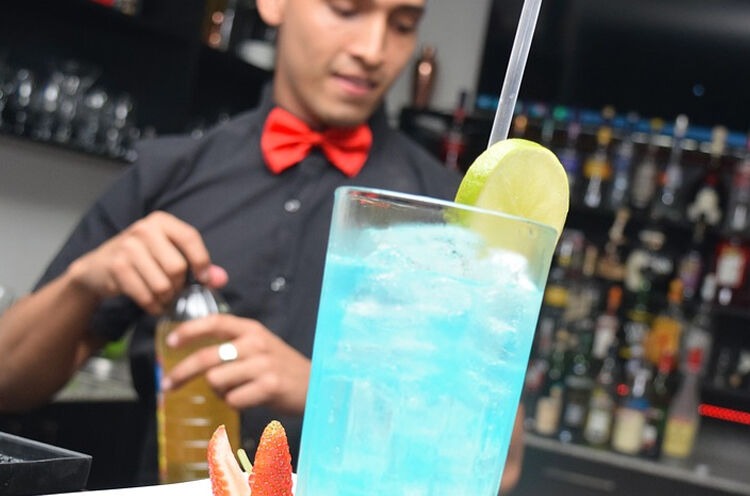Craft cocktails are becoming all the rage in bars and restaurants across the globe. By definition, craft cocktails are custom-made alcoholic drinks. In craft cocktails, everything is handmade or specifically tailored for that drink – custom glassware, ice cubes, syrups, bitters, or garnishes, among others.
Special drinks may sometimes call for aged liquors, although it is not uncommon to find traditional spirits being used as well. The aim is to create a drink and an experience that cannot be easily replicated, similar to crafting artisan foods. Craft cocktails are in such high demand that a significant number of food establishments and hotels are looking for experienced mixologists.
Mixologists vs. Bartenders
Isn’t mixology the same thing as bartending? Both professions require skills in mixing drinks. However, there are many differences in terms of their responsibilities, both minor and major.
● Mixologists
One of the significant differences is their approach towards mixing drinks. Mixologists take mixing drinks from a culinary standpoint.
When students sign up for a professional mixology course, they learn about the tools and the science behind making drinks. This includes the equipment, tools, and ingredients beyond ice and liquor. Students learn about drinks and mixing at a molecular level.
In one cooking class in the UAE, participants learn about basic food preparation, cooking, and presentation techniques. The same goes for mixologists. They learn how to make purees and foams, how to perform various slicing techniques, what different syrups do, the importance of making your own ice, and even designing their own menus.
Mixologists are involved in every part of the process, from the research to the preparation and presentation. As the drink is tailored in a specific way, it becomes a unique experience in itself. It is what the customers come back for.
● Bartenders
Bartending is a different beast altogether. Bartenders are more service-oriented. They are focused on creating a safe and enjoyable drinking experience, and not just in terms of creating the drink itself.
In the case of bartenders, they are additionally responsible for making sure that the bar has everything needed to make the drinks for that day or week. This includes glassware, ice, and the ingredients, among others. They also set up the bar, check customers’ IDs (to make sure that only adults purchase drinks), process payments, and even clean up.
If mixologists are artisans, bartenders are efficient all-around bar employees. A bartender’s primary responsibility is not to experiment, but to serve many clients. As such, creating drinks is only one of their tasks.
To maximize efficiency, they often make standard drinks, using pre-prepared ingredients. They are also excellent communicators and are fully approachable. As a bartender, the aim is to serve clients and fulfill as many orders as needed to keep customers happy and coming back for more.
Essential Tools
In any industry that requires creativity, the tools do not make the artist. However, regardless of whether the artist wields a paintbrush, chisel, camera, or laptop, the individual has to know what tools are available and how to use them efficiently.
Here are the important tools for crafting excellent drinks:
● Jigger
Measuring cups and spoons are the standard tools of the trade if you are a cook or a baker. Mixologists, on the other hand, have jiggers. It is an indispensable measuring tool for mixologists, allowing them to be precise when mixing ingredients.
Jiggers look like hourglasses with both ends hollowed out to accommodate the liquid. They come in a variety of measurements, cone shapes, and even colors. Although typically made from stainless steel, jiggers can also be made from plastic or glass.
● Bar spoon
Not to be confused with your typical spoon, bar spoons feature a long handle with two ends: a tiny spoon on one end and a spiral handle. The spiral handle can be used to create swirls or layers within the cocktail.
European models also feature a tiny hammer on the other end. These function much in the same way as a muddler. Such spoons can be used to pound and lightly muddle herbs or tiny pieces of fruit when no other tools are available.
● Muddler
Drinks such as the Mojito and Caipirinha call for fresh and processed herbs. Processing requires pressing down on the herbs to release the aromas hidden inside without damaging or overtly bruising the leaves. It works like a pestle, and mixologists need a durable mixing glass or shaker tin to hold the herbs without the risk of breaking.
Like the other tools listed here, muddlers can be made from wood and stainless steel. Unvarnished wood is the best as the mixologist can use it without the risk of leaving the varnish in the drink. Metal muddlers with rubber or plastic bases are also available, although experts advise against using ones with teeth built in as they can shred the leaves.
● Juicer
Fresh juices are essential in designer drinks, and mixologists can’t get those in a supermarket juice pack. Faithful craft cocktail patrons know that juice packs are a sign that the place is not an authentic craft cocktail bar. The only way to get fresh fruit juice is by using a juicer and actual fresh fruits.
Citrus juicers can be found in many homes. Most standard models feature a round dish and a cone to squeeze the juice out. Models with a strainer are more beneficial as they filter out the pulp, although standard models can get the job done for mixologists.
● Glasses
Mixology glassware run the gamut from stout to tall and slender, and from long-stemmed to short-stemmed. Each type is designed for a specific category. For instance, cone-shaped glassware featuring long stems are used for cocktails, short-stemmed snifters are for brandies, while elegant cordial glasses are for drinks with liqueurs.
● Ice
Ice may seem like a small, insignificant detail for most people, but for mixologists, it is a critical component. Except for the English cocktail known as the Pink Gin, all drinks call for ice. Since the 1800s, ice has been used in cocktails.
For mixologists, ice can change the taste of a cocktail. Typical tap water is filled with impurities and bubbles. The best ice cubes are clear, look like glass, and melt more slowly than your average ice cube from the fridge.
Mixology and bartending are both exciting fields to pursue. Sign up for a course or class today to see how you can elevate your cocktails and drinks.
AUTHOR BIO
Shanaaz Raja is the Course Director at International Centre for Culinary Arts – ICCA Dubai.


